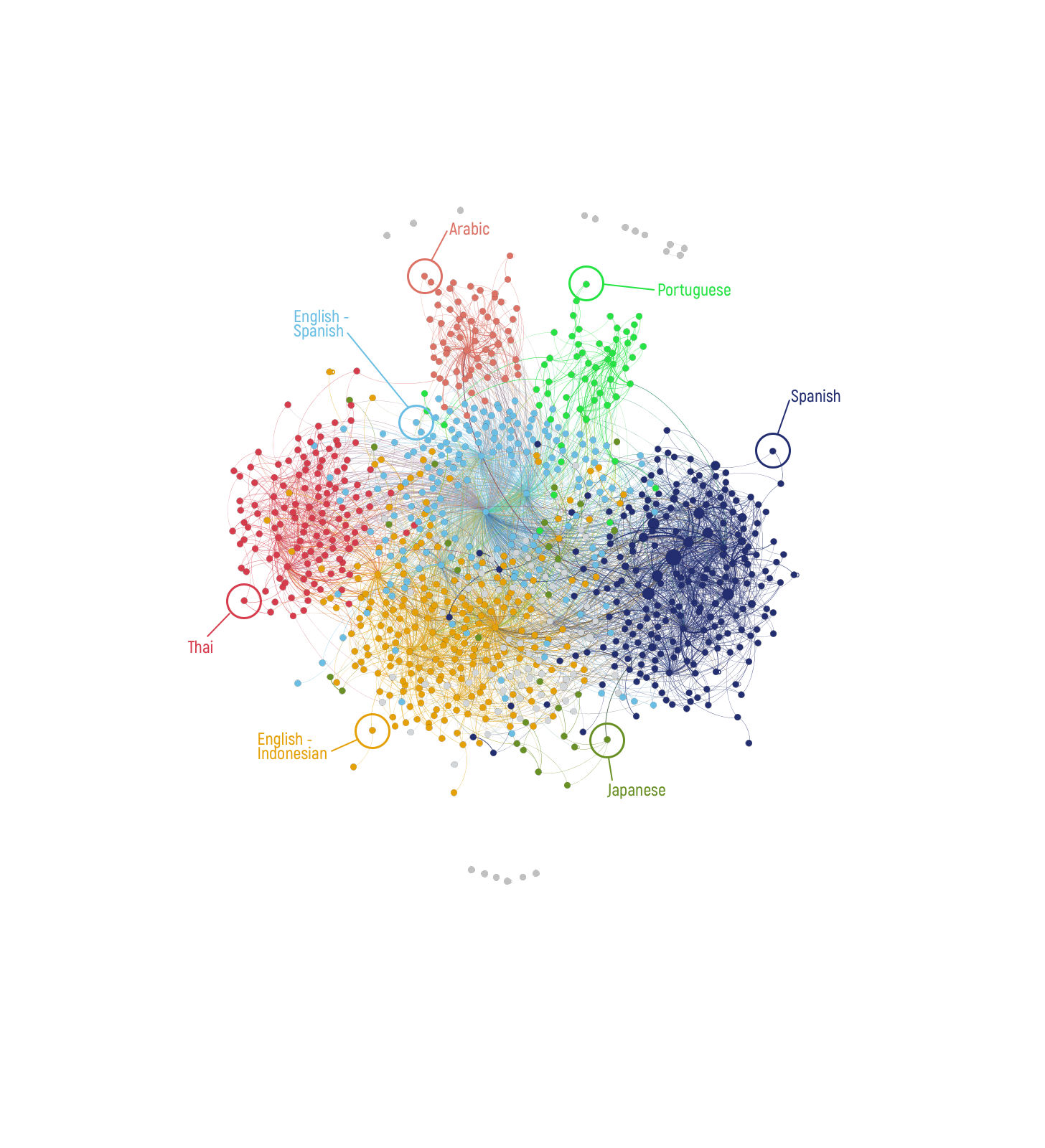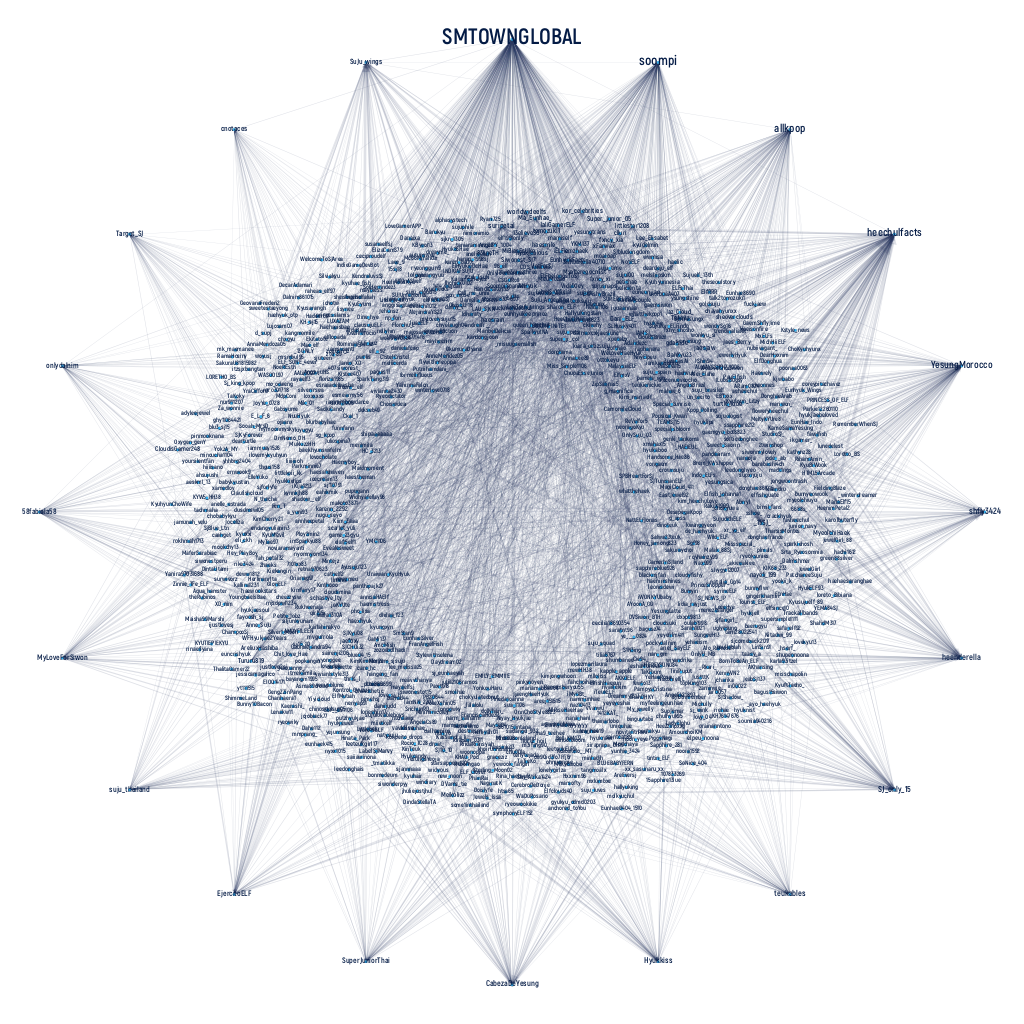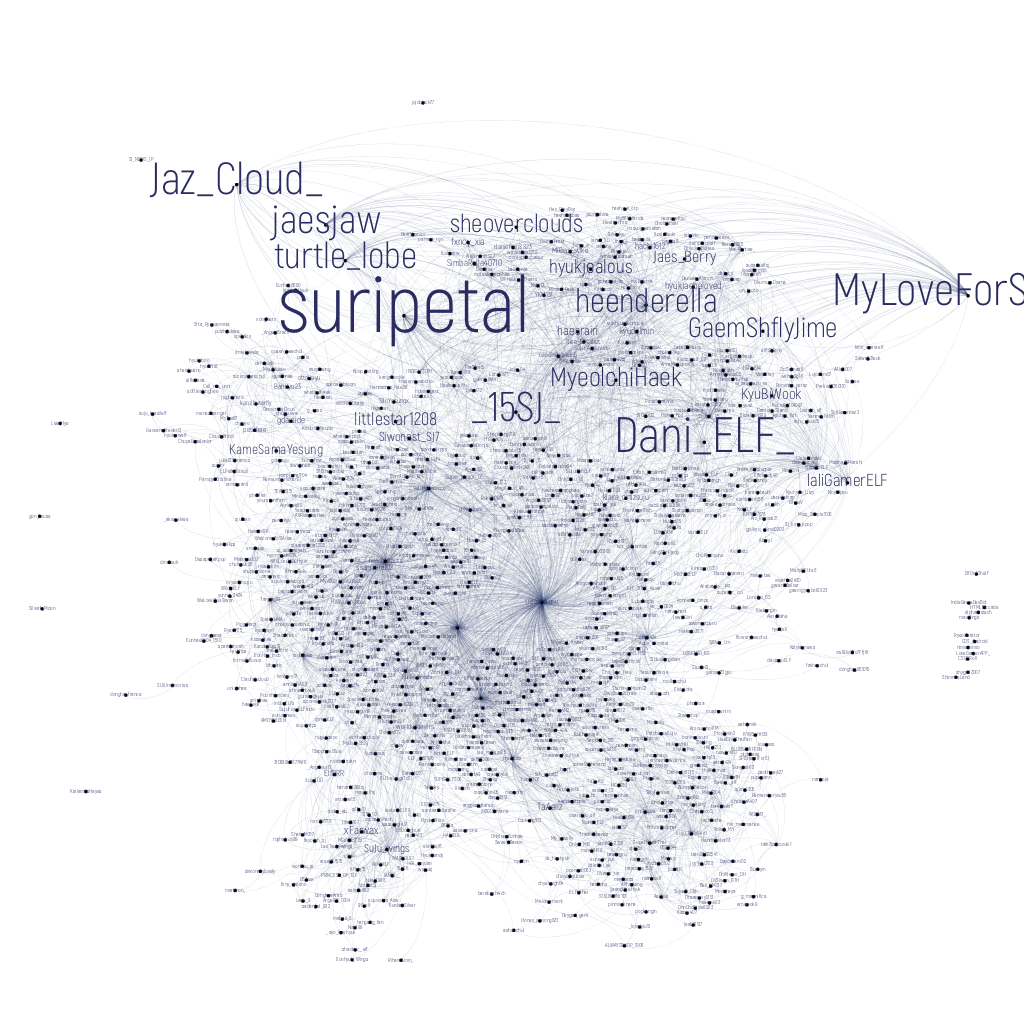#READYTOPLAY:
The Return of Super Junior & ELF

PART 1: BACKGROUND
Who Are Super Junior?
Super Junior is a South Korean boy band formed in 2005 under management of SM Entertainment. Comprised of 13 members at its peak, the group shot to international fame in 2009 with the release of their single Sorry, Sorry. The group broke fresh ground in the kpop market by employing a multi-faceted marketing strategy, dividing into smaller sub-groups to target niche markets, and branching out individually as MCs, actors, radio DJs, and comedians. This strategy helped build a strong and diverse groups of fans, called Ever Lasting Friends or ELF, first in South Korea and then expanding across Asia and the rest of the world as the group's concert tour Super Show became a hallmark of their album releases.
2017 marks the first comeback of the group under their own sub-label, Label SJ, and a return from a 2-year hiatus while the bulk of the members fulfilled their mandatory military enlistment. These two years have marked an explosion in international popularity of other kpop groups, leading to speculation on the scale of Super Junior's fandom after so many years.
The Analysis
This report is the culmination of two months of data collection and analysis with the aim of building a partial picture of Super Junior's fandom, ELF. The assessment of the fan community in this report is partial because it is based only on communication through a single social media platform, Twitter. Twitter is selected because, by its nature, it allows for easy flow of information between groups and individuals, and provides the greatest insight on how the different elements of the fan community connect with each other.
There are a number of questions that I hope to answer in this report, from the obvious to the more nuanced:
- What does a kpop comeback look like on Twitter?
- How does Super Junior's comeback compare to that of a newer group?
- How big is Super Junior's fandom?
- What is its internal structure?
- How can Super Junior (& ELF) use this information to help future comebacks?
Caveats
Any numbers stated below will be an underestimate of the full scale of both the size of the ELF fandom and the conversation. Tweets were collected based on specific keywords considered to be unique identifiers of Super Junior. It should be noted that certain strings that are commonly used by fans to refer to the group (for example, 'SJ'), are too general to be used for this type of data collection. Full methodology can be found here.
PART 2: WAKING UP
D-40 Countdown
Super Junior's comeback was launched by the posting of a countdown timer on their official website at 00:00 KST on September 27th. The reaction of fans was immediate, as is visible from the first peak on Fig. 1, with more than 40,000 tweets being posted that hour. Fig. 1 illustrates the volume of tweets per hour by ELF over the comeback period, sampled at different times per day and including sampling during key release hours. There are 5 significant spikes in tweet volume over this 40-day period, corresponding exactly to content released relating to the comeback. Apart from the first peak upon the comeback announcement, the cluster of four peaks from October 17th-20th coincide with the release of teaser images of the group and members. The tweets by @SMTOWNGLOBAL that correspond to these announcements are featured below Fig. 1. On October 19th, teaser images were released in two tweets, hence 6 tweets mapping to a total of 5 spikes in the timeline.
Peak 1: 00:00 KST Sep 27
Peak 2: 10:00 KST October 17
Peak 3: 10:00 KST Oct 18
Peak 4: 10:00 KST Oct 19
Peak 4: 10:00 KST Oct 19
Peak 5: 10:00 KST Oct 20
PART 3: OLD VS NEW
Shortly after Super Junior announced their comeback date, a newer, "trending" boy group announced they would come back on the same date. This provided an interesting opportunity to compare twitter activity of a fandom for a 12-year group vs. that of a much younger group. For the sake of this comparison we label the fans of the comparison group Fandom B.
Number of Fans
These numbers indicate the unique number of user IDs used to tweet on the day of the comeback, using only the hashtags for the group name and album title. From this data, we can also determine the overlap in the fandoms: a total of 154 accounts tweeted about both groups during this period. We label this group as Multifandom.
NOTE: in order to provide an accurate comparison between the number of fans in the ELF fandom vs. the number in Fandom B, only tweets containing the hashtags related to the group name or album title were counted. For the remainder of the analysis, however, additional hashtags employed by ELF are used. There are two main reasons for this:
- This analysis focuses on ELF, and it was therefore important to collect as much information about this group as possible.
- November 6th is the anniversary of Super Junior, and it is typical for fans to prepare specific hashtags for this event. As a result, fans would likely be focusing their efforts on hashtags that are not simply the name of the group and the title of the album.
As a result, the estimated Number of Fans for ELF is certainly an underestimate, just as it is likely Fandom B's scale is underestimated by this value. Please see Part 4 for a more comprehensive analysis of ELF.
Language Distribution
One method of understanding the scale of a fandom on the international stage is to examine the language settings of individuals. The following figures show the distribution of languages used by ELF vs. Fandom B, as well as for the Multifandom group. It should be noted that these represent language settings of the user, and do not necessarily reflect the language that person uses to communicate at all times. Of particular note here is the difference in the number of the Korean-speaking fans between ELF and Fandom B. This difference has a significant impact on the perceived success or "relevance" of the groups, and will be highlighted further in the discussion.
Noise
One of the more interesting observations coming from the comparison of the two comebacks is the difference between a fandom knowing when to expect content to be released vs. a fandom not having that information confirmed. In this case, ELF were not informed officially of the release time of Super Junior's PLAY album, while Fandom B were aware of their group's release time. To further amplify the confusion among ELF, rules for digital music charts in South Korean changed while Super Junior was on hiatus. In the past, kpop groups would release albums at 00:00 KST to allow them to improve their rank on music charts as it would mostly be fans streaming during that hour. On February 15, 2017, a number of major digital music charts changed their rules to prevent this sort of 'chart-rigging' by fans. As a result, most kpop groups now release their albums at 18:00 KST. Since this happened while Super Junior was on hiatus, it appears that most fans were not sure if Super Junior would follow this new trend. As a result (and coupled with the fact that November 6th is the group's anniversary), the biggest spike in tweet volume by ELF occurred at 00:00 KST, as shown in Fig. 3. The second spike both chronologically and in terms of volume was at 11:00 KST, when the group held a press conference to talk about their album, while the actual album release time of 18:00 KST was the 4th highest spike in tweet volume.
In sharp contrast is the timeline of tweets by Fandom B, which builds naturally to peak at 18:00 KST when the album is released. It should be noted, however, that hashtags decided at short notice by Fandom B were not specifically being monitored for the sake of this data collection, and therefore the full extent of their activities might not be illustrated in this chart.
PART 4: ALL ABOUT ELF
Measuring ELF
For a total of 41 days of data collection, 298,592 unique Twitter usernames were identified to tweet content specifically relating to Super Junior and their comeback. While this includes accounts that may only be sources of news, it also vastly underestimates the total size of Super Junior's fandom. Many fans get their news and interact on other social media sites, either by preference (i.e. Facebook) or due to regional restrictions (i.e. Weibo).
On November 6th, ELF managed to reach the top 10 worldwide trending topics on Twitter 3 times, with the tags '#READYTOPLAY', '12 YEARS WITH SUPER JUNIOR', and '#슈퍼주니어_BlackSuit'. Fig. 4 highlights the use of certain keywords during that 24-hour period.
Number of languages spoken:
40
Number of tweets by ELF on 1106:
492,175
Communities
Of greater interest than numbers or keywords is the community network of Super Junior fans on Twitter. By mapping how fans interact with each other, it is possible to understand how information flows through the overall fan community, what are the sources of that information, and what are the divisions within the community.
Fig. 5 maps ELF based on modularity class, identifying communities within the larger fandom that are more tightly connected by the sharing of information through retweets. Fig. 6 then illustrates the connection between the communities of Fig. 5 and the language used. As expected, the ELF fandom tends to compartmentalise into communities based on a common language. While English dominates as the first or second most spoken language in all communities, it is particularly noteworthy in the case of Spanish (and to a lesser extent Portuguese) fans that the vast majority of information is coming from a single dominant language. This has some important implications for teams or individuals hoping to share information with the broader fandom, and will be discussed in more detail in Part 5.
Fig. 5: Community Mapping of ELF

Information Sharing
Mapping the users who are the greatest sources of information, as well as those who are the most central, is another technique to understand the community. In Fig. 7, we see the top 20 most retweeted accounts who share content related to Super Junior. As expected, SM Entertainment's company account @SMTOWNGLOBAL is first, with the remainder including a variety of kpop news sources as well as Super Junior fansites.
Fig. 8 illustrates the centrality of users, with those who are more central appearing with larger font. The centrality of a user indicates how often they appear on the shortest path between other users. This means that highly central users are pathways for sharing a lot of information with other users in the network.
.
Fig. 7: Top 20 Retweeted Users

Fig. 8: Most Central Users

PART 5: DISCUSSION & CONCLUSION
ELF Are Still Here
After 12 years as a group, with ups and downs of every type imaginable (almost), Super Junior and their fans have endured. Over 41 days of data collection resulted in counting 298,592 unique users tweeting about the group. On the day of the group's comeback, ELF tweeted almost half a million times and had 3 worldwide trending topics on Twitter, easily beating out the Twitter activity of a 'trendier' competitor.
They Like Scheduled Events
Super Junior fans showed significantly more activity on Twitter when they were warned in advance to expect content to be released. This is particularly clear on the day of the comeback, when fans weren't given official information about the time of the album release until later in the day, resulting in a dip in activity around the album release.
Their Purchasing Power Could Be Better
The purchasing power of fans based in Korea is significantly higher than those not based in the country. In fact, while Super Junior's fandom size was measured at 89.7% of the size of Fandom B, the first week album sales for Super Junior were only 56.3% of the sales of Group B (121,386 sales vs. 215,669). Defining purchasing power as number of albums purchase per fan (or albums/fan), we can directly compute Korea-based fan purchasing power as about 3 times that of international fans. These values should not be used to estimate the total sales of the albums, but does provide insight into the challenges a strongly international fandom faces if they wish to boost album sales.
It should be noted that this calculation is based on first week album sales, while Super Junior's album was out of stock in many online and offline stores by their third day of sales. It cannot be said how this impacts the purchasing power of the fans.
They Are Multilingual (And Sometimes Don't Talk To Each Other)
It is natural for a fandom or any international collection of people to split into communities that speak the same language. While not a specific weakness, it does pose an obstacle for organising fandom-wide support activities. This could be solved by strongly coordinated efforts between fansites targeting different language communities.
APPENDIX: METHODOLOGY
Twitter data collection was performed with the Python Tweepy package. Analysis was performed with Python 3, Gephi, and Tableau.
Keywords used for pre-comeback tweet collection: ['#SuperJunior', 'SuJu', 'Super Junior', '#SuperJuniorComeback', 'SuperJunior8thAlbumComeback', 'SJ Comeback', 'LabelSJ', 'LableSJ', 'Label SJ', 'Lable SJ', 'SuperJunior', 'SJComeback', 'SJ Comeback', 'SuperJuniorComeback', 'SJReturns', 'SJ Returns', 'ELF', 'SuperJuniorisComing', 'SuperJuniorPLAY', '#슈퍼주니어PLAY', '#PLAY', '#BlackSuit', '#SceneStealer', '#비처럼가지마요', '#OneMoreChance']
Keywords used for November 6th tweet collection: ['Super Junior', '슈퍼주니어','#SuperJunior', 'SuperJuniorPLAY', '#슈퍼주니어PLAY', '#PLAY', '#BlackSuit', '#비처럼가지마요', '#OneMoreChance', '#READYTOPLAY', '#슈퍼주니어_블랙수트_6시', '#슈퍼주니어_BlackSuit', '#SEVENTEEN','#TEEN_AGE','세븐틴']
Data collection, analysis & final reporting © beamsplit 2017



